What Are Tablet Binders?
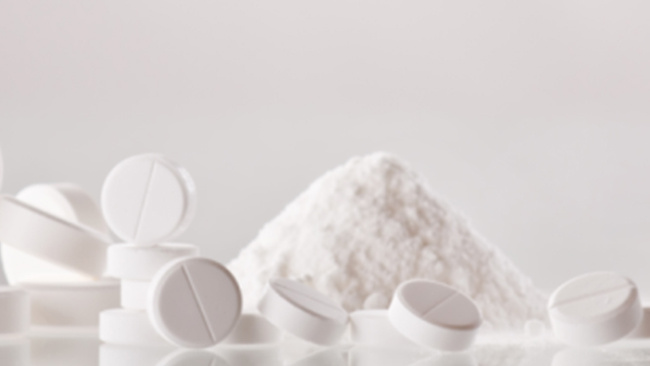
A tablet binder is an inactive ingredient (excipient) added to a pharmaceutical or nutraceutical formulation with the intent of enhancing flow and compressibility of the blend. It holds active ingredients and other formulation components by forming agglomerates. Binders act like a “glue” to ensure granules and other formulation components forms a cohesive solid tablet.
The binders market is expected to grow at a CAGR of 8.9% from 2026 to 2033, with increasing demand for natural or plant based binders like starches and gums.
Key Takeaways
- Tablet binders are excipients that act as “glue” to hold active ingredients and other components together, forming a cohesive solid tablet.
- The binder market is projected to grow at a CAGR of 8.9% from 2026 to 2033, driven by demand for natural and plant-based binders like starches and gums.
- Binders influence tablet performance through mechanisms such as adhesion, cohesion, liquid bridges, and compression forces, which affect strength and disintegration.
- Formulators use data-driven approaches like design-of-experiments (DoE) to optimise binder concentration for ideal tablet hardness and disintegration time.
- Innovations include predictive modelling, 3D printing, and digital formulation platforms, enabling faster development and personalised medicine.
How Tablet Binders Work
Mechanisms
When powders or granules are compressed into a tablet, several microscopic forces come into play:
-
Adhesion & Cohesion: Particles stick to each other (cohesion) and to surrounding surfaces (adhesion), creating a solid structure.
-
Liquid Bridges: Small amounts of moisture or binder solution can form “bridges” between particles, strengthening the tablet.
-
Compression Forces: During manufacturing, high pressure brings particles close enough for van der Waals forces and solid-state bonds to lock them together. The combination of these mechanisms gives the tablet its mechanical strength while still allowing it to break apart when swallowed.
Role of the Binder and API properties
The success of a tablet depends on the physical and chemical properties of its ingredients:
- Solubility: A soluble binder dissolves quickly, promoting faster tablet breakdown and shorter disintegration time for immediate-acting formulation.
- Particle Size: Finer particles pack more efficiently leading to denser, harder tablets with improved compressibility and tabletability, but may negatively impact dissolution.
- Hydrophobicity: Hydrophobic excipients impact tablet properties, by slowing water penetration and weakening tablet bonds, which delays disintegration time, drug release and bioavailability.
- Moisture Sensitivity: Tablet formulations need an optimal moisture level for proper compaction. Too much moisture can reduce the mechanical strength of the compact, while too little can decrease particle bonding, resulting in weak tablets. Also, inherent moisture may have a negative impact of some active pharmaceutical ingredients (APIs), affecting stability and shelf life.
The selection of the right excipients in optimal ratio ensures the tablet integrity during manufacture, storage and transportation and still disintegrates at the right time in the body to offer its therapeutic efficacy.
Data-Driven Optimization
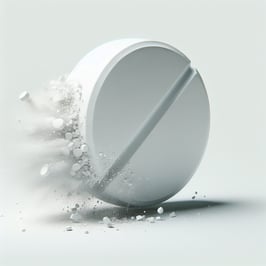 Formulators use data to fine-tune tablet formulations. One common analysis looks at binder concentration vs. key tablet properties:
Formulators use data to fine-tune tablet formulations. One common analysis looks at binder concentration vs. key tablet properties:
- Hardness: Increases with binder concentration, making tablets more robust.
- Disintegration Time: Typically rises as hardness increases, since stronger bonds take longer to break apart.
- Sweet Spot: The optimal binder level is where the tablet is strong enough for handling but still disintegrates within pharmacopeial limits.
This type of design-of-experiments (DoE) approach allows scientists to predict outcomes and optimize formulations efficiently.
Benefits of Tablet Binders
Tablet binders are essential excipients that improve the mechanical properties of a tablet by holding its ingredients together, ensuring uniformity, and facilitating tablet production. Here are some of the key benefits:
- Enhance Tablet Integrity: Prevents excessive chipping or breakage of the tablet and helps retain its integrity during manufacture, storage and transport while still allowing tablets to disintegrate in gastro-intestinal tract.
- Uniform Weight & Dose: Increased particle size because of agglomeration during granulation process results in optimal flow of the blend on tablet press ensuring consistent tablet mass and drug content by reducing segregation of active ingredients.
- Increased Cohesion and Strength: Binders act as an "adhesive" for tablet ingredients, increasing inter-particulate bonding strength and plasticity to create a cohesive mass that holds its shape during manufacturing and handling.
- Improved Manufacturability: They transform powders into granules, which improves flow properties and makes the mixture easier to compress into tablets.
- Added Volume for Low-Dose Tablets: In formulations with a low amount of active ingredients, binders can provide the necessary volume to create a practical-sized tablet with improved content uniformity.
- Versatile Application: Binders can be used in various tablet manufacturing processes, including wet granulation, dry granulation, and direct compression.
- Cost Efficiency: Allow use of cheaper or less flowable drug powders by improving processability.
Types of Tablet Binders
A summary of the binders by type, including examples and typical use cases.
|
Binder Type |
Examples |
Typical Use |
Key Characteristics |
|
Natural Binders |
|
Wet granulation Direct compression |
Inexpensive and widely available. Biocompatible; some natural binders may have variable quality or stability issues. |
|
Semi-synthetic Binders |
Wet granulation Direct compression |
Stable with good reproducibility. Consistent quality. Adjustable solubility/viscosity - can modify drug release. |
|
|
Synthetic Binders |
|
Wet granulation |
Excellent binding. Good solubility. Consistent quality. Inert with many APIs. |
|
Sugar Binders |
|
Chewable tablets Wet granulations |
Improve tase and palatability. Add bulk. May cause hygrosopicity and affect diabetic patients. |
|
Polymeric Binders |
|
Specialized formulations Modified release systems |
Strong binding, film forming. Can aid in controlled release. |
|
Direct Compression Binders |
|
Direct compression |
Excellent compressibility. Good flow properties. Widely used in modern tableting. |
Binders by Process
Wet Granulation
During wet granulation, binders may be added either as dry powders, as a slurry or in a solution form. In most cases, they are introduced as a liquid spray at a controlled rate which facilitate agglomeration of fine powder particles into larger, stronger, and more uniform granules. The binder solution initiates a series of micro-mechanisms that lead to particle adhesion and granule growth. . This process forms a stable network that allows the granules to maintain their integrity during drying and subsequent processing. Examples of binders used in wet granulation are Starch 1500, Povidone (PVP) or cellulose derivatives like HPMC.
Dry Granulation
In the dry granulation process, binders are usually added in powder form rather than liquids. They can be mixed directly into the powder blend just before lubrication and compression step, or just before the material is compacted into slugs or ribbons.
The binder works by helping particles stick together under compaction pressure. The mechanical force of compression activates the binder, strengthening the bonds between particles without the need for a liquid bridge. This approach makes dry granulation especially useful when working with ingredients that are sensitive to heat or moisture. Examples of binders used in dry granulation are Starch 1500, HPMC, PVP and copovidone.
Direct Compression
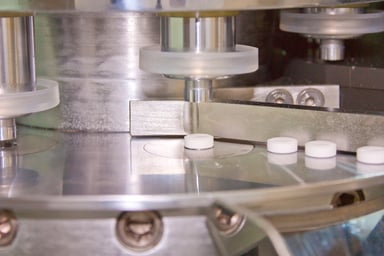 In the direct compression process, binders are blended as dry powders directly with the active pharmaceutical ingredient (API) and other excipients before the final tablet is compressed. Unlike wet or dry granulation, no intermediate steps such as slugging, roller compaction, or liquid addition are required. The binder’s role here is to improve the flow of the powder blend and to strengthen particle adhesion so that the tablets hold together once compressed.
In the direct compression process, binders are blended as dry powders directly with the active pharmaceutical ingredient (API) and other excipients before the final tablet is compressed. Unlike wet or dry granulation, no intermediate steps such as slugging, roller compaction, or liquid addition are required. The binder’s role here is to improve the flow of the powder blend and to strengthen particle adhesion so that the tablets hold together once compressed.
Direct compression is often preferred for its simplicity and efficiency, but it relies heavily on selecting the right binder and excipients to ensure consistent tablet strength and quality. Examples of binders used in direct compression are Starch 1500 and microcrystalline cellulose (MCC).
Binders by Origin
Natural
Natural binders are increasing in popularity following growing demand for label friendly and sustainable ingredients, although some natural binders can present challenges including variability, or microbial contamination. Some widely used examples of natural binders include starches, gum arabic or sodium alginate.
Semi-synthetic
Semi-synthetic binders are the most widely used binders in tablet formulations. They are derived from natural ingredients that are then chemically modified to improve their binding properties. They combine the biocompatibility of natural ingredients with the consistency and functionality of synthetic binders. Examples of semi-synthetic binders include Starch 1500, HPMC or modified guar gum.
Synthetic
Synthetic binders are man-made produced by chemical synthesis. Compared to some natural binders they can offer greater purity, reproducibility and minimal microbial contamination risk. Some synthetic binders may require control of residual solvents. Examples of synthetic binder include PVP, PEG or PVA.
Tablet Binder Selection Criteria
Drug Properties
Arguably the most important criteria are the API characteristics. The binder must react with the drug. API solubility, pH and moisture sensitivity should all be considered when selecting an appropriate tablet binder.
Manufacturing Process
Manufacturing process is a key consideration. If a manufacturer wishes to produce in-house, the binder may need to be compatible with the equipment to reduce capital investment. In some cases, manufacturers might choose to outsource manufacture to a third party that can produce using the chosen manufacturing method (e.g. wet or dry granulation).
Desired Release Profile
Binder selection plays a crucial role in determining a tablet’s drug release profile by influencing both disintegration and matrix formation. Water-soluble binders, such as starch or polyvinylpyrrolidone (PVP), dissolve quickly upon contact with gastrointestinal fluids, promoting rapid tablet disintegration and faster drug release.
In contrast, poorly soluble binders, like ethyl cellulose or high-viscosity, water soluble binders, like HPMC, water penetration into the tablet is delayed thereby increasing disintegration time and reducing the drug release rate.
Additionally, certain binders can form a gel or matrix around the drug when hydrated, creating a diffusion barrier that allows the drug to be released gradually. This property is useful for formulating sustained or extended-release tablets, enabling controlled drug delivery without altering the API.
Typical Usage and Dosage
Binder amount is influenced by tablet size, desired hardness, API properties, and disintegration requirements. When used at suboptimal concentration, tablet loses its integrity but when used at higher concentration, it impacts formulation properties such as disintegration and drug release.
Amount of binder is different depending on the manufacturing process. For instance, more binder may be required in wet granulation (typically 3-10%) whereas dry granulation or direct compression may only require 1-5% in the formulation.
Regulatory and Safety Considerations
When selecting tablet binders, formulators must balance regulatory compliance, safety, and performance. Regulators require ingredients to meet established quality standards. Using a novel binder not previously approved in marketed products requires a full toxicological evaluation and regulatory submission, which can significantly extend development timelines.
From a safety perspective, binders must be non-toxic, non-allergenic, and free from contaminants such as heavy metals, residual solvents, or microbial impurities. Their levels should remain within daily intake limits to avoid unwanted effects like GI irritation or hypersensitivity. A well-chosen binder ensures not only tablet integrity and manufacturability but also regulatory acceptance and patient safety.
Latest Trends and Innovations in Tablet Binders
The shift towards naturally derived and multifunctional binders continues to be of growing interest. A study presented at the European Conference of Pharmaceutical (ECP) 2025 demonstrated the use of isomalt as a PVP-binder replacement wet granulation manufacturing.
To accelerate the pharmaceutical development process, companies are utilizing predictive modelling and automation to optimize binder selection. One example is the use of a Digital Formulation and Self-Driving Tableting DataFactory. This approach accelerates the timeline from material characterisation to development of an in-specification tablet within 6 hours, utilising less than 5 grams of API.
3D printing in tablet manufacturing enables the creation of personalized medicines designed to meet the unique needs of individual patients. This technology allows for precise control over binder placement and drug release profiles, facilitating the production of customized tablets with optimized therapeutic performance.
Summary and Key Takeaways
Tablet binders play a critical role in pharmaceutical and nutraceutical formulations by ensuring tablets are mechanically strong and biologically effective. The choice of binder depends on drug properties, manufacturing processes, and desired release profiles. With growing interest in sustainable and multifunctional excipients, the industry is embracing innovations such as predictive modelling, 3D printing, and digital formulation platforms to accelerate development and personalise treatment.
For further reading, you can find Colorcon studies on the use of Starch 1500 as a binder for director compression, low and high shear wet granulation and fluid bed granulation.
Frequently Asked Questions
- Can a binder also be a disintegrant?
Yes, multifunctional excipients like Starch 1500, act as a binder and disintegrant, thereby minimizing ingredients and simplifying formulation. Learn more in this study. - How much binder is too much?
This depends on the property of API, other formulation components and desired physicochemical properties of the formulated tablet. Generally, 2-10% binder may be added for an immediate release formulation. Higher concentrations are used for controlled release formulations. - Do binders affect drug release?
Yes, binders can significantly affect drug release because they influence tablet disintegration and the tablets overall mechanical strength. A 2024 study, demonstrated slower drug release when higher molecular weight binders were used in tablets, and higher binder concentrations resulted in slower drug release. - Are natural binders better or worse than synthetic?
Binder selection depends on several factors, including the manufacturing process, API properties and patient acceptability. Both types of binders are widely used throughout the pharmaceutical industry. - Can binders cause adverse reactions/allergies?
Like any ingredient, binders can cause adverse reactions or allergies, although they are typically included in very small quantities and therefore, they are generally well tolerated.

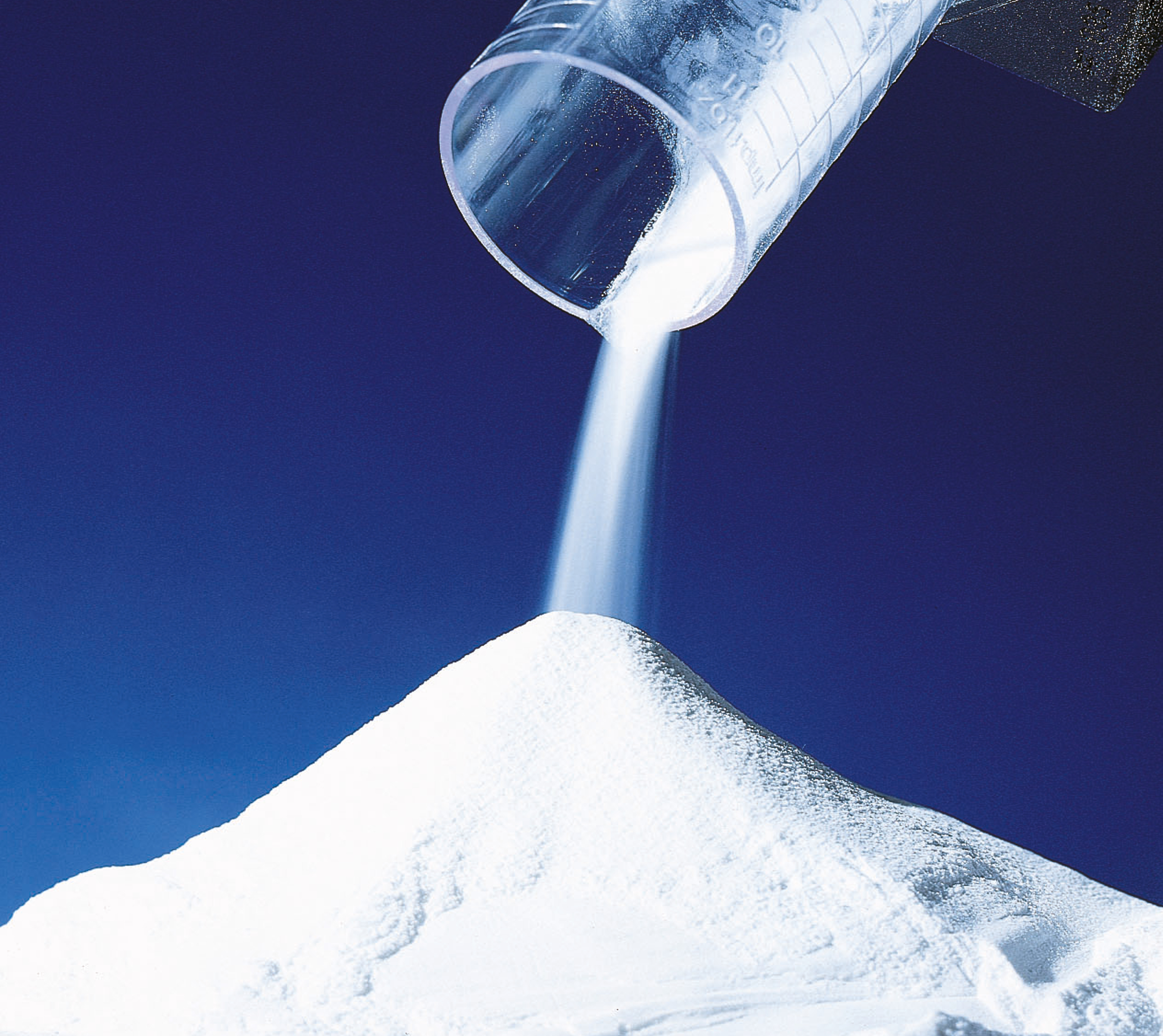
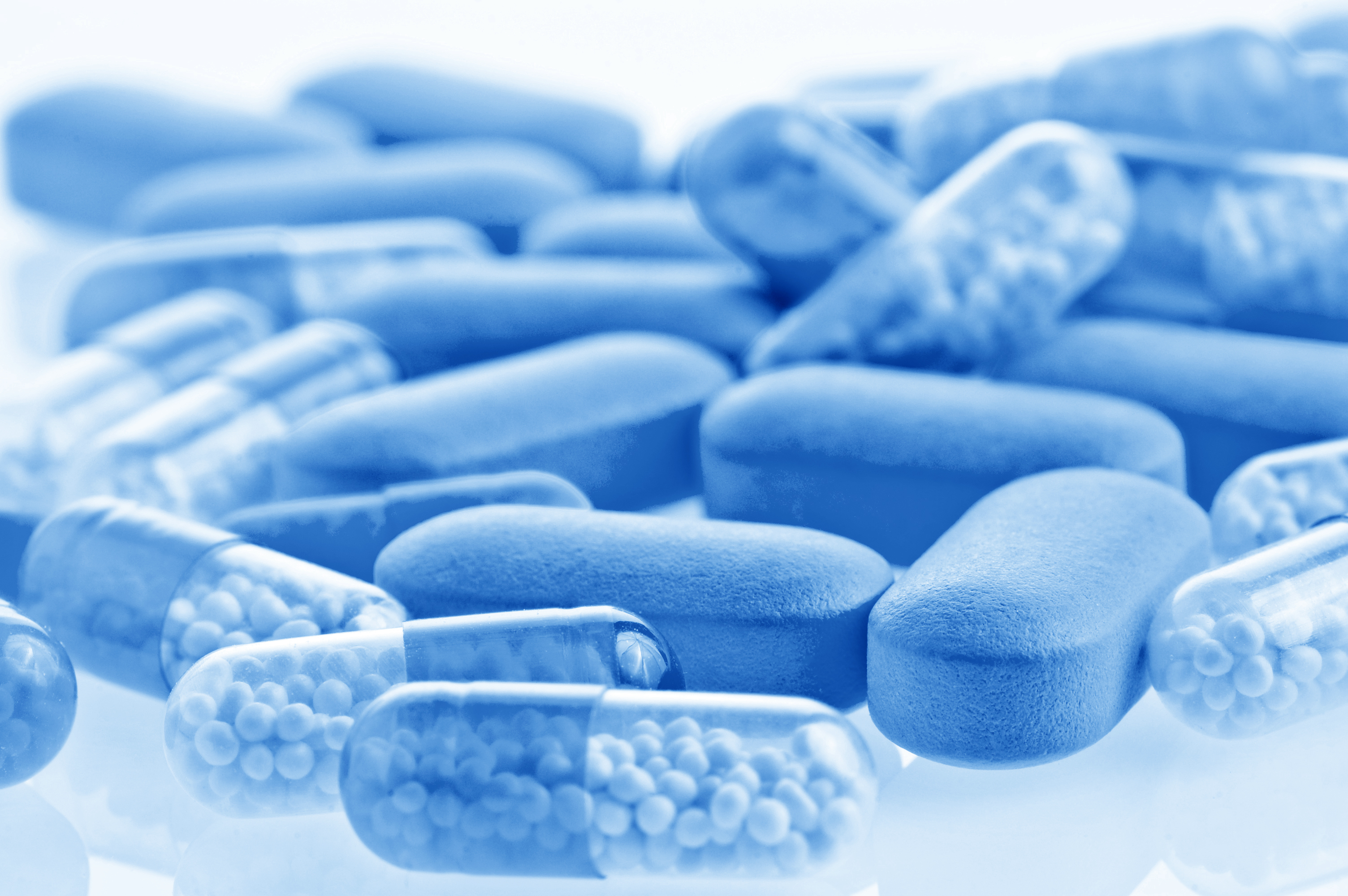
.png)